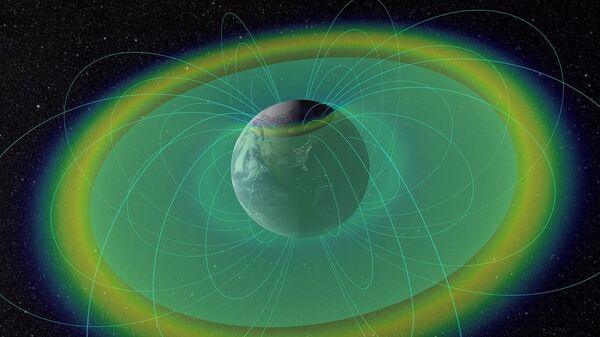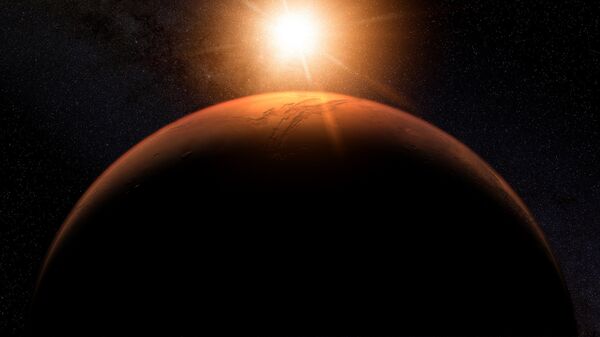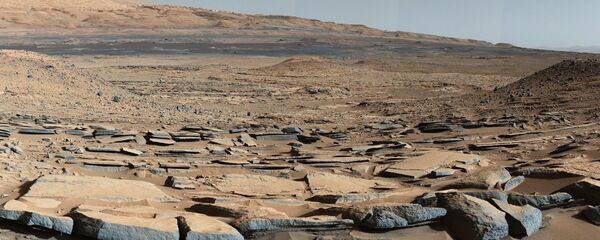The approximate two years it will take to travel to Mars and back will take two and a half years off the lifespan of each astronaut involved in the mission, a report presented at a Moscow conference on aerospace and environmental medicine has estimated.
"To date, calculations have been done on the total radiation risk to astronauts' lifespans following long flights to Mars lasting up to three years during the period of maximum solar activity given varying thickness of aluminium shelter-based protection from radiation", the conference report, seen by Sputnik, explains.
"When performing calculations for a simple sphere-shaped spacecraft with a standard model of a human body within it, and considering the scenario of a speedy launch of a spacecraft into Mars' orbit using a liquid-fuelled rocket engine and a nuclear propulsion system, it was calculated that for a two-year expeditionary mission to Mars and back, the total radiation risk to the lives of astronauts, regardless of age, with protection from a radiation shelter of 20 g/cm2 would be 7.5 percent, with the drop in average life expectancy being 2.5 years", the report states.

Scientists also focused on other aspects of a possible long distance space flight, including the creation of a space-based greenhouse to grow lettuce and carrots to provide astronauts with necessary vitamins and dietary fibres. RSC Energia is engaged in the creation of a space-based greenhouse for experimental use aboard the Russian segment of the International Space Station.
"In the future, the designs and technologies for a space-based greenhouse that have been created can serve as a design basis for a production-model greenhouse as part of the life support system for an orbital Moon-based station or a manned ship to Mars", the report notes.
Earlier this year, Russian President Vladimir Putin gave the go-ahead for the creation of a super heavy-lift launch vehicle, seen by experts as a crucial step to any future manned Mars mission. Russia is expected to launch its next unmanned mission to the Red Planet next year, with manned missions currently planned for the 2040-2045 timeframe.


